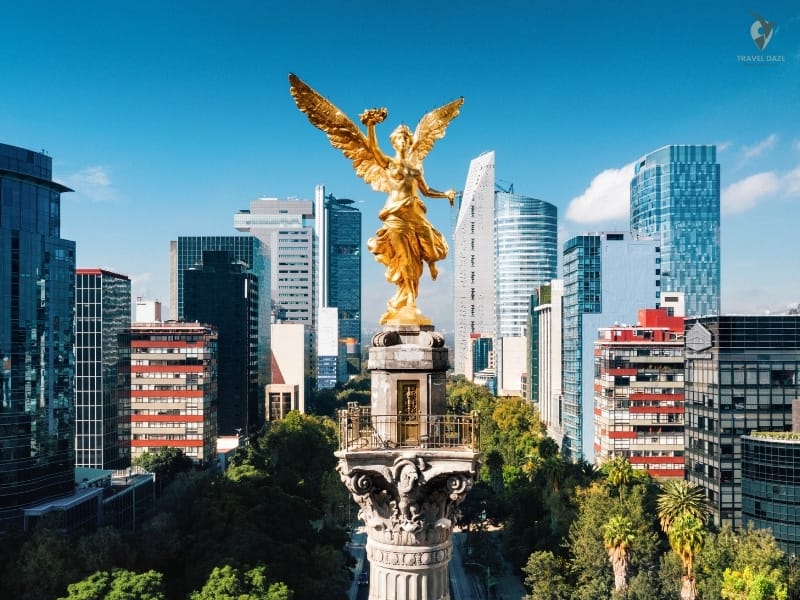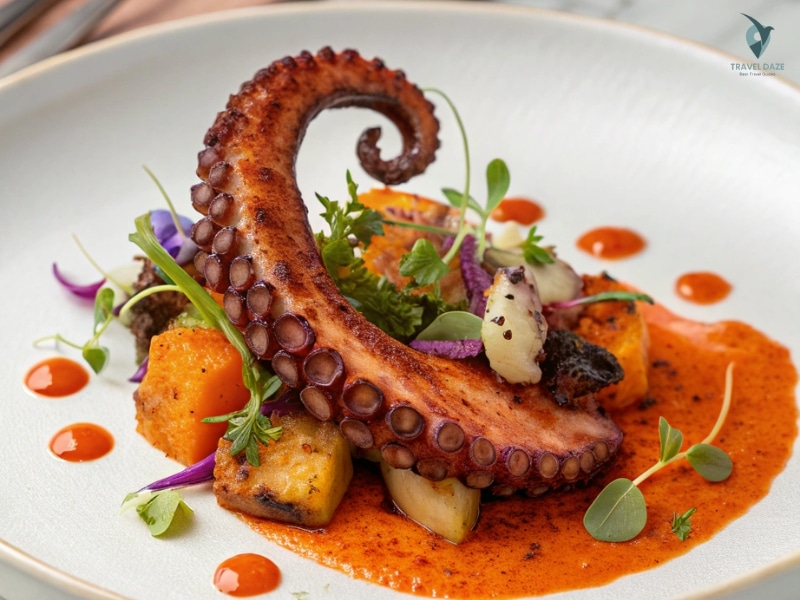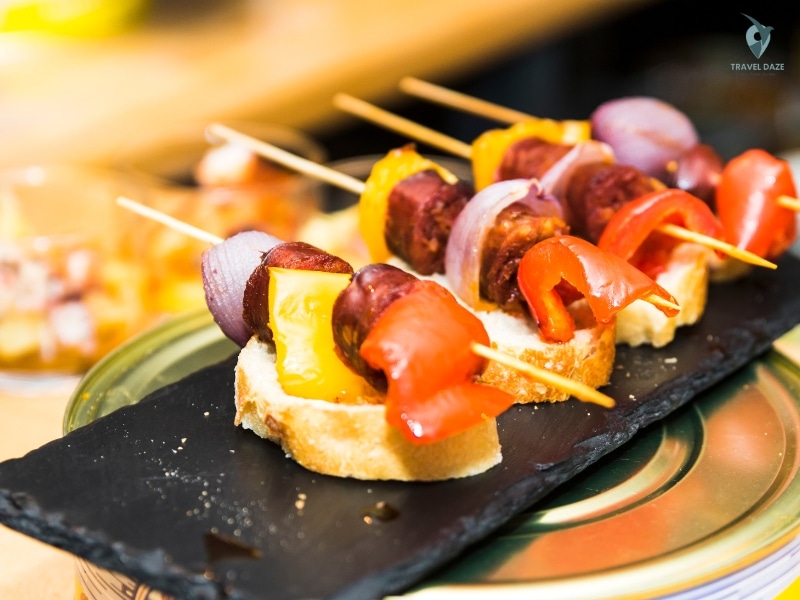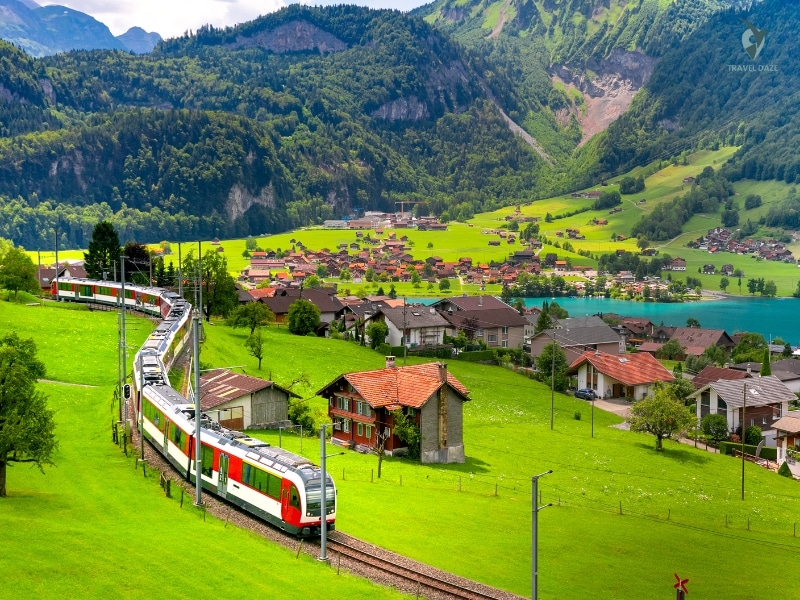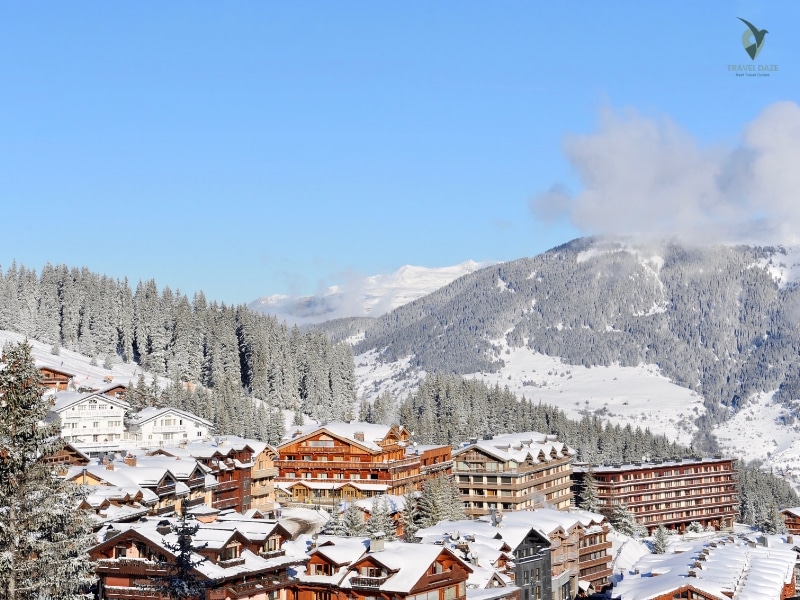I used to feel anxious about visiting this lively country, but my first trip changed my perspective completely. Last year, more than 40 million international travellers visited its beaches, cities, and culture, showing that good planning results in amazing experiences.
Table of Contents
ToggleJust like looking at the surf conditions before heading out, being aware of some precautions can really help. Popular tourist spots usually have added security, and 9.5 million residents strive to ensure the safety of visitors. Risks differ by area, but many well-known places are just as safe as big cities in the U.S.
Main Points
- In 2024, Mexico welcomed over 40 million tourists, reflecting increasing confidence in travel safety.
- Popular tourist spots usually have extra safety measures, such as police patrols and surveillance cameras.
- Regional risks vary, so be sure to research your specific destinations, just like you would for any journey.
- Travellers on their own should focus on staying in bright places and seek advice from locals.
- Official advisories assist in adjusting plans to fit the current situation.
Is it safe to visit Mexico? Explaining the Misconceptions
Headlines can seem frightening, but my firsthand experience shows a different reality. The reality? Your safety here varies based on your location, just like in any other place. Quintana Roo, where Cancún is located, is a Level 2 destination, just like France or the UK.

Grasping U.S. State Department Advisories
The advisory system has four levels. Level 1 means to “exercise normal precautions”, while Level 4 advises “do not travel”. Jalisco (Puerto Vallarta) is at Level 3, but the resorts there function like safe bubbles. Always read the fine print—warnings often leave out tourist spots.
Baja California Sur caught me off guard. I felt safer in Cabo than in some areas of my hometown, despite what people often think about border states. A local hotel owner joked, “Cartels stay away from tourist areas—we’re their source of income.”
Popular Destinations vs. Dangerous Areas
The Romantic Zone in Puerto Vallarta is lively with cafes and galleries, while rural Jalisco deals with difficulties. In the same way, crime rates in Mexico City are lower than those in Rome. Utilise resources such as Journey Mexico’s maps to identify safer areas.
The kidnapping in Matamoros in 2023 was a tragic event, but it was uncommon. When you look at the numbers, Tulum is statistically safer than New Orleans. The important part? Visit popular places and listen to the locals—they have the best advice.
Important Safety Tips for Travellers in Mexico
Many travellers miss easy habits that can make their trips better—here’s what I recommend. Managing cash and avoiding scams, small actions lead to greater peace of mind.
Avoid using standalone ATMs. I always use bank machines located inside lobbies because they are less likely to be tampered with. Divide your money: keep some in a belt, some in your shoe, and have a fake wallet with small bills.
Noonlight and GeoSure are the apps I rely on for safety. With just one tap, you can share your location with your emergency contacts. GeoSure evaluates neighbourhoods in real-time—it pointed out a questionable area in Playa del Carmen that I might have overlooked.
Taxi Rules: Always look for official logos and licence plates. In Playa, I found out that it’s better to ask hotels to call cabs because unmarked cars can be unsafe. Are you looking for ride-shares? Prohibited in certain areas; please verify locally.
It’s crucial to remain calm when the police stop you. A friend paid a $30 fee for a fake traffic violation. Keep small bills apart for these situations—arguing usually doesn’t help.
When it’s dark, stay on well-lit streets and walk with others. I choose hotels close to nightlife areas so I don’t have to walk far.
A pub fight in Tulum broke out over a bad drug deal, and bullets flew near tourists. Simply avoid it.
Fit In: Leave behind the flashy jewellery. My simple t-shirt and flip-flops didn’t attract any attention next to my neighbour with a Rolex.
Emergency Phrases: Learn “Ayuda” for help and “Llame a la policía” for call police. People in the area react more quickly when you make an effort.
Backup Documents: Send yourself scans of your passport and the addresses of your hotels via email. If I had lost my phone once, it would have been a big problem without cloud backups.
How to Stay Safe in Mexico’s Most Popular Places
From the waves of the Pacific to city streets, every location requires special attention. Even though tourist areas usually seem safe, understanding local details can make your trip easier. Here’s how to explore three popular spots with ease.
Puerto Vallarta: A Paradise on the Pacific Coast
During spring break, many people visit the beaches, but additional police patrols around ATMs and bars help maintain safety. Stay on the main streets in the hotel zone—I always avoid going beyond Basilio Badillo Street after dark.
When snorkelling at Los Arcos, my tip is easy: rent equipment from shops that have red flags (licensed operators). They understand the currents and keep a close watch on changes in the weather.
Playa del Carmen and Tulum: Sunshine, Beaches, and Wise Decisions
The yoga retreats in Tulum are very different from its nightclubs. The 2022 crossfire incident near a club made me realise I should leave before midnight. Bring only the essentials for the beach: a waterproof pouch can keep your cash, ID, and hotel key safe.

Cenotes are enchanting, but be sure to check the ropes and depth markers. Local guides at Dos Ojos advised me against swimming alone in hidden caves.
Mexico City: City Explorations with Care
Roma Sur and Noche Buena are considered some of the safest neighbourhoods. Once, a pickpocket cut my bag in La Merced market. I now keep decoy pesos in my front pocket and use Uber, which is a bit questionable but dependable.
I love street food, but I avoid the questionable stands. If vendors don’t have a local option, I look for another one. In Condesa, the bars close by 1 AM, making it great for those who like to head home early.
Getting Around: Taxis, Buses, and Driving at Night
Getting around easily can make a big difference in your trip. Some transport options are safer than others, but it’s important to know what to look for.
Be extra careful around taxis. In 2023, police in Cancún arrested 14 drivers for scams. This is my verification routine:
- Search for official logos and licence plates.
- Request hotels to arrange cabs for you—avoid hailing random cars.
- Please check the driver’s ID photo before you enter.
Driving at night near Celaya taught me some tough lessons. Cows wander, and potholes show up unexpectedly. I now drive on rural roads only during the day.
Buses provide excellent choices:
- ADO coaches undergo air conditioning and security checks.
- Local colectivos cost less, but they can be riskier for your valuables.
- Book your intercity trips online to steer clear of ticket scams.
Rental cars require full coverage insurance. A $200 bribe attempt on Highway 15 stopped quickly when I showed my policy paperwork—the police backed off right away.
Keep these road safety tips in mind:
- Call 078 for Green Angels highway help.
- Baja California Sur imposes fines for using phones while driving.
- Always park in lots with attendants and avoid dark streets.
Rideshares aren’t available everywhere. They are not allowed in Quintana Roo—another reason to look into things before your travel day.
Airport transfers can have hidden pitfalls. One person tried to guide me to his unmarked van. I now book shuttles in advance through my hotel.
Protecting Your Money and Belongings from Theft
A pickpocket incident in Guadalajara showed me smart ways to keep my cash safe. Now, I travel more wisely—whether taking out cash or keeping my valuables safe. Here’s a simple way to keep your belongings safe and worry-free.
Understanding ATM Safety
I avoid using standalone ATMs on crowded streets. Bank lobbies are safer because their cameras help prevent skimmers. What’s my rule? Have a friend with you to support you during withdrawals. If you are by yourself, look for unusual card readers or any loose parts.
Hotel safes are not completely secure. Sometimes, staff look for them, so I keep a fake wallet hidden inside. I keep my cash in a slim money belt under my clothes. Bonus: Thieves usually don’t look in socks for hidden items.
Money Tips for Shopping and Relaxing by the Sea
Beaches require additional safety measures. I put bills in a waterproof pouch and attach it to my swimsuit. In markets, small bills are preferred—showing large notes attracts notice. Vendors often say they “can’t change” large bills to trick travellers.
- Decoy wallet: Put some expired cards and a few bills in an old wallet. Give it up if you feel pressured.
- To prevent phone theft, try not to look at maps in busy areas. Keep your device secure by holding it firmly or using a crossbody strap.
- Check the charges on your restaurant bill before you pay. Some servers include invisible items.
Credit cards should be used as backups, not as your main tools. Let your bank know about your travel plans to prevent your accounts from being frozen. A declined transaction left me stuck until I called home.
Nightlife and Social Events: Enjoy Responsibly
To my surprise, my most adventurous nights overseas taught me more about being careful than any travel guide ever could. From the beach clubs in Tulum to the alleyways in Cabo, I’ve noticed how fast fun can become risky. Here’s how to enjoy the lively atmosphere without becoming a number.

Make wise choices from the beginning. I always avoid open containers—make sure to watch bartenders pour your tequila. When you’re at clubs, try my three-sip rule: have one drink and take three bathroom breaks to check how you’re feeling. If something seems wrong, get rid of the glass.
Keep these personal safety steps in mind:
- Buddy codes: With friends, come up with phrases like “Check the weather” to mean “I need out now.”
- In my experience, a cheap wedding band can reduce unwanted advances by 80%.
- Cash limits: Only take what you can afford to lose easily—I set aside $50 for each night.
Make sure to pay attention to venue research. Fast checks indicate:
- Google Maps street view for accessing alleys
- Reviews on Tripadvisor that talk about “police presence” or “dark corners”
- Instagram tags showing real crowd demographics
Taxi scams increase after midnight. I book rides in advance through my hotel’s concierge, as their drivers are checked and approved. Interestingly, displaying a screenshot of the “booked taxi” confirmation helps to discourage scammers.
Simply refuse street drugs. The shooting in Tulum in 2023 began due to a disagreement between dealers. Other travellers were caught in the crossfire while dancing close by.
Observe how others respond to your actions. If employees appear uncomfortable with specific topics, trust their feelings. I once stayed away from a spiked drink because a waiter quietly shook his head at my glass.
Set reminders to check the time every 90 minutes. Late-night activities can cloud my judgement, but the buzzing phone alerts help me stay alert. Before I go out, I always:
- Take a picture of my hotel’s front desk number.
- Send your live location to two contacts.
- Please take note of the closest police booth to our location.
Exit plans are more important than entry plans. When the music reaches its high point, I know it’s time to go—avoiding the rush of the drunk crowd. In 2022, most of Cabo’s arrests took place after 2 AM due to public urination and fights.
Health and Emergency Readiness
Nothing spoils a trip more quickly than sudden health issues—here’s how I get ready. Fortunately, taking sensible action can help you avoid many issues. These steps ensure travellers stay safe, covering everything from food safety to emergency contacts.
Insurance is essential. GeoBlue helped me save $1,200 when I needed stitches in Puerto Vallarta. Make sure to see if your policy needs you to pay for the hospital upfront. I found out the hard way that some clinics require cash payment before treatment.
Water purification tablets are my special tool. I put one in every glass, even at hotels. I use this checklist for street food:
- Choose stalls that have long lines, as locals usually know which ones are the best.
- Look for gloves or handwashing stations.
- Stay away from raw vegetables that have been washed in tap water.
I experienced altitude sickness in Mexico City. I now pack Diamox and stay hydrated with electrolyte packets. Here’s a quick tip: Coca tea is great for helping with dizziness.
Getting ready for emergencies begins at home. I store these numbers in my phone:
- U.S. consulate: +52-55-5080-2000 (Mexico City)
- Contact the local police by asking your hotel for the direct number.
- GeoBlue offers a helpline that is available 24/7.
Sunburns can be a hidden danger. I put on SPF 50 every two hours. Brands that are safe for reefs help protect marine life and are also gentler on the skin.
Vinegar helps to neutralise jellyfish venom from marine stings. I prepare a small first-aid kit that includes hydrocortisone and seasickness tablets. A nurse in Cabo showed me how to clean wounds with bottled water instead of tap water.
Are there any prescription medications? Bring twice the amount in original bottles. Border agents took my allergy pills because they weren’t labelled. I also have a doctor’s note now.
You can find COVID tests at airports and pharmacies. The government has approved clinics that display blue “Sanidad” signs. I stay away from standalone testing tents because they usually charge too much.
Local Insights: What Mexicans Would Like You to Understand
People from the area shared insights that changed the way I see their culture—here’s what is most important. Small gestures, such as asking for permission before taking photos, can help build trust. A family-run taco stand surprisingly taught me more about generosity than fancy five-star restaurants.
The culture of tipping is complex. Servers make average pay, so a tip of 10–15% is typical. For street vendors, rounding up, like paying 50 pesos for a 45-peso item, is a way to show appreciation. When you’re in markets, try to negotiate softly—a smile is more effective than making demands.
Holy places require calm respect. During temazcal ceremonies, listen to the guide and refrain from using phones or speaking loudly. In fishing villages such as Playa del Carmen, avoid interrupting the nets when they are being cast. People in the area consider this to be bad luck.
Beaches that are good for the environment do well when people stay away from sunscreen containing oxybenzone. Many shops sell reef-safe brands. For events such as festivals, participate in dances, but be sure to ask before recording any rituals.
- Spanish pet names like “mi reina” and “joven” are expressions of affection and are not meant to be offensive.
- Say “buenos días” to people you meet on the streets—it’s a common practice in small towns.
- Street vendors value patience. Use “¿Cuánto cuesta?” instead of pointing.
Clothing is important. It’s important to cover your shoulders in churches, but wearing beachwear is acceptable in coastal areas. In del Carmen, if you buy a drink first, fishermen will share their stories with you—their oral history is invaluable.
Concluding Thoughts for a Relaxed Journey
After more than 50 trips across this diverse country, I’ve discovered that careful planning is always better than letting fear take over. For me, the only real danger was a stray donkey standing in the way on a country road—barely a safety issue.
In the end, you will appreciate beautiful places even more by following some easy safety tips. Reserve hotels that have good reviews, look at advisories, and pick up some basic Spanish phrases. A bad sunburn taught me to always pack reef-safe sunscreen.
There are many police officers in tourist areas, and local people usually make an effort to assist visitors. If you’re new to travelling, consider visiting places like Puerto Vallarta or Cancún; they are great for beginners.
Always get travel insurance and enjoy your adventure. This country appreciates those who explore with awareness and good judgement.
FAQ
Is it safe for tourists to visit Mexico right now?
Popular places such as Puerto Vallarta and Playa del Carmen are generally safe, but it’s important to check U.S. travel advisories. Check State Department advisories before making a booking. Stay in popular places for added safety.
What is the biggest mistake that travellers make in Mexico?
Having too much cash or showing off costly items. I keep small bills close and use hotel safes for my valuables to stay discreet.
Is it safe to use taxis at night?
Always choose authorised taxis or apps like Uber, especially when it’s dark outside. I always check the driver’s information before getting in.
What are the risks of nightlife in places like Tulum?
Clubs and bars can be enjoyable, but it’s important to stay aware. I stay with my friends, keep an eye on my drinks, and steer clear of lonely streets when I go back.
Is it best to stay away from driving in Mexico?
It’s not a must—just make sure to plan ahead. Toll roads are the safest option, and I avoid driving at night because of low visibility and road conditions.
What’s a local tip you really trust?
Mexicans are known for their warm hospitality. I ask hotel staff or restaurant workers for advice about the neighbourhood—they will direct you to the best and safest places.
Are the beaches in Baja California safe?
Yes, usually, but I always keep an eye on my belongings. While tourists are swimming, thieves are stealing bags.
What should I do during police encounters?
Remain calm and courteous. I always have a copy of my passport ready, but I don’t give cash for “fines” right away.

